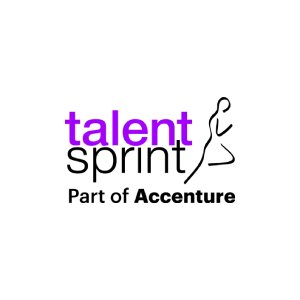Climate Risk Assessment for Businesses

In today’s world, climate change isn’t just an environmental issue, it has sppread across the buisnesses also. The rising frequency of floods, droughts, heatwaves, and regulatory shifts is no longer a distant threat but a boardroom conversation.
To cite an instance, you can grow your business with low-carbon products and services. This strategy protects you from financial losses, operational problems and reputation damage that come from ignoring climate risks.
This article will take you on a journey on how the right knowledge and tools can help you drive sustainable change in your organisation. You'll be ready to lead in a world where environmental responsibility shapes everything.
What is Climate Risk?
Climate risks refer to the sudden changes in the climate and the potential risks they bring, leading to losses in businesses, communities, and damage to economies.
For example, the frequent flood in Assam poses significant threats to communities and disrupt the economy altogether. Every year, floods damage crops, roads, and homes, affecting agriculture and tea businesses and costing the state crores of rupees.
Examples of Climate Risks Across Industries
Different industries face their own climate-related challenges that need specific risk management solutions. A look at these vulnerabilities shows how deeply climate risks can affect your organisation.
1. Manufacturing and supply chain disruptions
Manufacturing companies with complex supply chains remain vulnerable to climate disruptions.
Climate affects manufacturing in several ways:
- Production facilities suffer damage from severe storms
- Water-intensive processes struggle due to a lack of water
- Worker productivity drops in extreme temperatures
- Wildfires threaten facilities and create unsafe working conditions
2. Agriculture and food security threats
Long-term threats like rising sea levels and temperature changes pose serious risks to farming. Weather patterns have changed. Almost every state now experiences longer growing seasons due to shifts in temperature, rainfall, and the number of frost-free days. This creates new opportunities but also challenges for farmers.
3. Energy and infrastructure vulnerabilities
Extreme heat wears down energy assets faster. It reduces their efficiency and power generation capacity. Summer heat mainly affects transmission lines by lowering their carrying capacity. This creates a chain of risks throughout energy systems.
4. Financial services and asset exposure
Banks face big risks through investments in climate-vulnerable assets. Climate change's economic and financial impacts could result in significant losses for banks.
Bank risk managers need to evaluate the industries they finance.
They must think about how financing needs will change as we move toward a zero-carbon economy. The financial system can amplify climate risks across borders and sectors. This shows how interconnected these challenges are.
Key steps in Climate Risk assessment
A strong approach to climate risk assessment needs a well-laid-out method that helps your organisation spot, measure, and handle both current and future climate-related threats. Your business will be ready for what lies ahead when you put this process to work, and you might even find new opportunities in our changing climate.
1. Identify physical and transition risks
Your original assessment should clearly separate physical and transition risks that matter to your organisation.
Physical risks cover both sudden events (floods, hurricanes) and long-term changes (sea level rise, temperature changes) that put assets and operations at risk.
Transition risks include policy changes, tech disruptions, market changes, and reputation issues that come from the world's move toward cutting carbon.
The identification process should:
- Set clear scope, goals, timeframe, and geographic coverage
- List specific sectors, assets, and stakeholders for assessment
- Think about current weak points and future risk scenarios
2. Assess financial and operational impact
Once you've identified the risks, you need to assess how they might impact your financial results and business operations. This means looking at how climate events could affect your revenue, asset values, supply chains, and daily operations. Your assessment should look at effects over different time periods and think about both direct problems (damage to facilities) and collateral damage (supply chain issues, changing customer priorities).
3. Conduct scenario analysis
Scenario analysis is a vital tool for climate risk assessment because regular risk models can't capture the unique nature of climate threats. This method enables you to test business strategies against multiple possible futures with varying climate outcomes.
The NGFS (Network for Greening the Financial System) scenarios offer a good starting point to learn about different policy goals, timing, and tech developments. A strong scenario analysis helps your organisation:
- Find weak spots across different climate paths
- Question business-as-usual thinking
- Improve strategic talks among stakeholders
4. Integrate findings into business planning
The next step puts your climate risk findings right into your core business strategy and decision-making. Climate considerations become part of strategic planning, where you spend money, and how you run operations. Your organisation should create a Climate Transition Action Plan with deadlines, science-based targets, a clear leadership structure, and specific responsibilities. This complete approach builds strength and might give you an edge through early adaptation.
Also Read: Corporate Sustainability Goals: From Strategy to Success
Tools and frameworks for climate risk management
Organisations need advanced analytical tools and standardised frameworks to manage climate risks well. These tools help decision-makers gain practical insights as uncertainty increases. Teams can analyse complex climate data and create evidence-based responses with these resources.
Integrated Assessment Models (IAMs)
IAMs are the lifeblood of climate risk management. They give policy-relevant insights into global environmental changes through quantitative descriptions of human and earth systems. These models integrate information from various scientific disciplines to address ecological challenges despite uncertainties.
The models typically have interconnected modules that represent the global economy, energy systems, land use, and climate. This setup enables analysts to understand the implications of climate policies and identify potential trade-offs. Your organisation can understand possible climate futures and their impact on business strategy through scenario analysis with IAMs.
AI and data analytics for localised risk
AI has transformed how we assess climate risks by processing big datasets with amazing precision. Machine learning algorithms can now scale down global climate models to match specific markets and asset locations.
Google's Flood Hub gives early warnings in 80 countries. IBM's flood detection systems create immediate maps from satellite imagery. Traditional risk assessments look at hazards one by one. AI provides a more comprehensive analysis by integrating environmental, socio-economic, and infrastructure factors. This all-encompassing approach considers multiple connected risks.
Nature-based solutions for adaptation
Nature-based solutions (NbS) offer affordable ways to adapt to climate change while bringing multiple benefits. These solutions protect coastal zones, restore wetlands, and add green spaces to cities. They tackle climate risks while also helping biodiversity. These methods work well for erosion control, flood prevention, and carbon capture.
Future Trends in Climate risk management
Climate risk management is constantly evolving in our ever-changing world. New technology gives organisations better tools to prepare for an uncertain future.
1. AI-powered forecasting and digital twins
Technology breakthroughs have changed how we predict climate patterns. AI-powered weather models now provide accurate forecasts much faster and require significantly less computing power than older systems. These improvements make quality climate forecasting available to organisations that don't have supercomputers. Digital twins have become another key advancement. These virtual copies of physical assets, environments, and systems let us see climate effects before they happen.
2. Sector-specific approaches to resilience
Different industries now create custom strategies to protect against their unique climate risks. Companies identify weak points in their supply chains using location data and diversify their suppliers to mitigate risk in climate-affected areas.
3. Why do early movers gain a competitive advantage?
Organisations that tackle climate risks head-on see real benefits. Companies that think ahead improve their competitive edge, face fewer risks, and find new ways to make money. Those who openly share their climate actions show accountability to stakeholders. This builds trust with investors and makes their brand more credible. Climate leadership has become essential to running a successful company. It helps attract talent and builds brand value as people become more environmentally conscious.
Conclusion
Climate risk management has become crucial for forward-thinking executives in today's volatile business environment. Physical and transition risks will without doubt reshape markets, supply chains, and consumer priorities in the coming decades.
Companies that delay climate action face mounting financial losses, reputational damage, and potential regulatory penalties. Organisations that adopt reliable climate risk frameworks gain a competitive edge through enhanced resilience, new market opportunities, and stronger stakeholder trust.
Modern tools make sophisticated climate risk management available to organisations of all sizes.
This is where executive education becomes a game-changer. Leading sustainability courses are now equipping professionals with the strategic tools to navigate this new normal. Among them, the IIM Calcutta corporate sustainability course stands out, designed to empower senior leaders with cutting-edge insights and practical skills to lead climate-smart enterprises.
Therefore, your strategic planning must include climate risk management as a core component, rather than a secondary consideration.
Frequently Asked Questions
Q1. What is climate risk management, and why is it important for businesses?
Climate risk management involves identifying, assessing, and mitigating potential threats to an organisation due to climate change. It's crucial for businesses as it helps protect against financial losses, reputational damage, and regulatory penalties while uncovering opportunities for innovation and competitive advantage in a changing climate landscape.
Q2. How can companies assess their climate-related risks?
Companies can assess climate risks through a structured process that includes identifying physical and transition risks, evaluating financial and operational impacts, conducting scenario analysis, and integrating findings into business planning. This approach helps organisations understand their vulnerabilities and develop strategies for resilience.
Q3. What tools are available for effective climate risk management?
Several tools aid in climate risk management, including Integrated Assessment Models (IAMs) for policy insights, AI and data analytics for localised risk assessment, nature-based solutions for adaptation, and standardised reporting frameworks like TCFD and ISSB standards. These tools help organisations analyse complex climate data and implement evidence-based responses.

TalentSprint
TalentSprint is a leading deep-tech education company. It partners with esteemed academic institutions and global corporations to offer advanced learning programs in deep-tech, management, and emerging technologies. Known for its high-impact programs co-created with think tanks and experts, TalentSprint blends academic expertise with practical industry experience.



